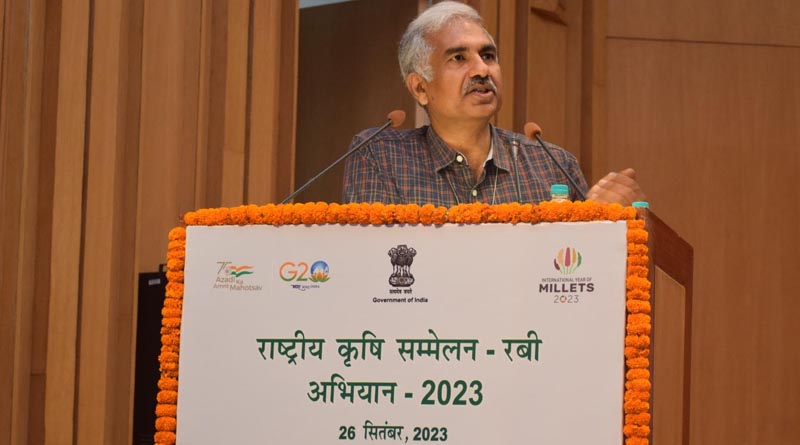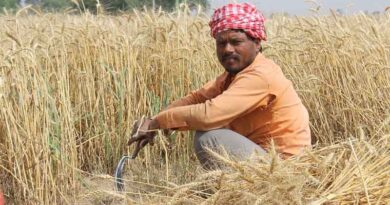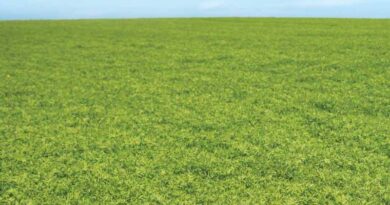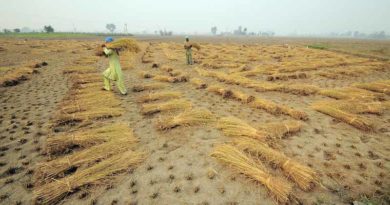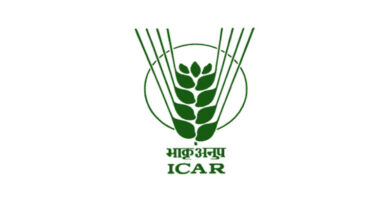India targets 3305 lakh tonnes of food grains production during 2023
26 September 2023, New Delhi: India has maintained an increasing trend in food grain production since the last decade. Manoj Ahuja, Secretary, Ministry of Agriculture & Farmers’ Welfare during the inauguration of the National Conference on Agriculture for Rabi Campaign 2023-24 said, “As per 3rd Advance Estimates (2022-23), production of foodgrains in the country is estimated at 3305 lakh tonnes which is higher by 149 lakh tonnes than the production of foodgrain during 2021-22. Record production is estimated of rice, maize, gram, pulses, rapeseed and mustard, oilseeds, and sugarcane. Total pulses and oilseeds production during 2022-23 is estimated at record 275 and 410 lakh tonnes, respectively.”
He said that total food grain production has increased by 31% in the last 8 years from 251.54 to 330.54 million tonnes. Oilseeds and pulses have followed the same trend of Exports of agricultural products (including marine and plantation products) for the year 2022-23 which have crossed USD 53.145 billion, the highest level ever achieved for agricultural exports. This achievement over the past two years will go a long way in realizing the Prime Minister’s vision of improving farmers’ income.
The Rabi National Conference was organized to review and assess the crop performance during the preceding crop seasons and fix crop-wise targets for the rabi season in consultation with State Governments. This would ensure the supply of critical inputs and facilitate the adoption of innovative technologies to enhance the production and productivity of the crops. The priority of the government is agro-ecological based crop planning for the diversion of land from excess commodities like rice and wheat to deficit commodities like oilseeds and pulses and high-value export-earning crops.
National targets for total food grains production has been set at 3320 lakh tonnes for the year 2023-24, the rabi season will contribute 1612 lakh tonnes out of this. Similarly, the share of rabi crops will be 181 out of 292 lakh tonnes for pulses and 145 out of 440 lakh tonnes for oilseeds. The strategy would be to increase area through inter-cropping and crop diversification and productivity enhancement through the introduction of HYVs and the adoption of suitable agronomic practices in low-yielding regions.
Mustard Productivity up by 7%
Mustard production has jumped by 37% from 91.24 to 124.94 lakh tonnes in the last 3 years. The productivity saw a 7% jump from 1331 to 1419 kg/ha. The area under rapeseed & mustard increased by 28% from 68.56 in 2019-20 to 88.06 lakh ha in 2022-23. The farming community and the State Governments deserve special appreciation for this commendable achievement. Increased mustard production is helping to tide over some of the crisis being faced in imports of palm and sunflower oil.
Fertilizer Availability
Secretary Fertilizers, Rajat Kumar Mishra stressed on the need for a timely supply of fertilizers. He shared various steps taken by the Fertilizer department to ensure a timely supply of fertilizers. Secretary (DARE) and DG, ICAR, Dr. Himanshu Pathak highlighted the need for adopting climate resilient practices. He presented the global perspective of climate change and adaptation strategies being put in place. Indian experience of combating climate change was shared by the NICRA team. A large number of studies conducted under the NICRA project have identified climate-resilient technologies for different agroecological regions.
Yield gaps in production
The conference raised concerns about large yield gaps in crop production with farmer’s practices compared to improved technologies. JS (Crops & Oilseeds), Ms. Shubha Thakur gave the vision for pulses and oilseeds for the next 5 years to make the country self-sufficient in these commodities.
For pulses, it is proposed to achieve the target of 325.47 lakh tonnes by 2025. Special projects like inter-cropping, targeting rice fallows, and expansion in high-potential districts and non-conventional regions will bring the additional area under oilseeds. All this will increase domestic production of annual edible oilseeds from the current level of 362 to 541 lakh tonnes and edible oil production from 85 to 136 lakh tonnes by the end of 2025-26. The renewed focus will help in reducing the import dependency from 56% to 36% in the next 5 years.
Also Read: John Deere and DeLaval form Strategic Partnership for Sustainable Milk Production
(For Latest Agriculture News & Updates, follow Krishak Jagat on Google News)

